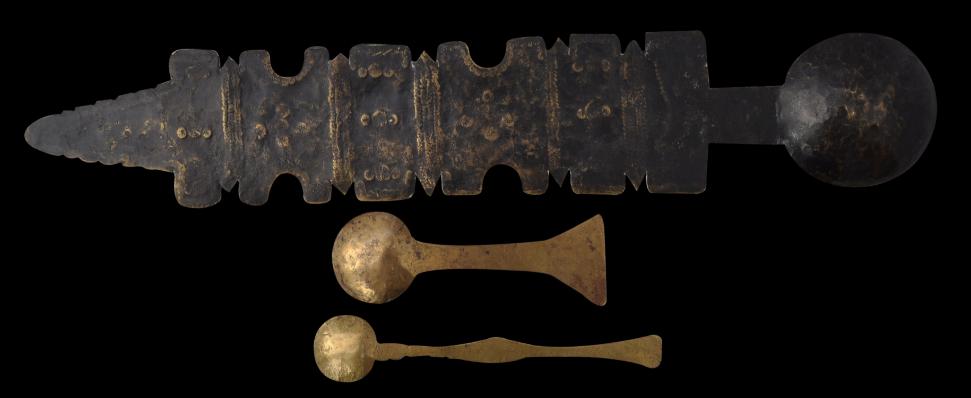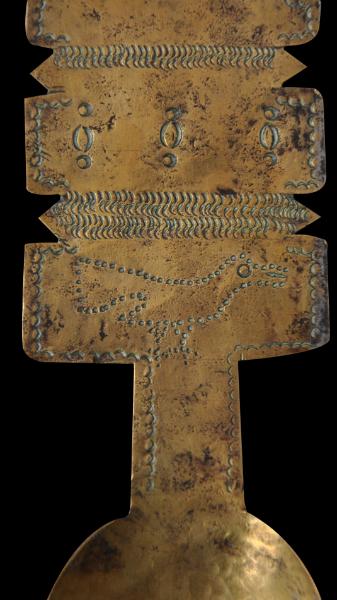
Ashanti/Asante Gold Dust Spoons
Three Beaten & Engraved Brass & Copper Gold Dust Spoons
Akan People, Ghana
19th century
lengths: 27.5cm, 10.5cm, 8.4cm
The two longer spoons here are of beaten brass and the shorter example is of beaten, incised copper. The larger example is decorated with punch marks including a bird motif near the spoon bowl. The other two spoons also are naively decorated.
All three have clear age and are without splits or repairs.
Related spoons are illustrated in Robbins & Nooter (1989, p. 197) and in Phillips (2010, p. 16-17).
Such spoons were necessary because gold dust was the principal means of exchange for several centuries in West Africa. Also, personal weights were used in Ghana and elsewhere in West Africa. Small weights were used to weigh gold dust which became the currency used to settle everyday transactions. The lack of some broadly verified and standardised set of weights meant that even the most trivial transactions could be laborious. Each party to any transaction would typically use their own weights. The negotiating process not only would include the cost in gold dust of the items being transacted over but also a comparison of weights, debate over the scales used and the purity of the gold dust (gold often was adulterated with brass filings). Even transactions as rudimentary as buying vegetables in a street market necessitated this process.
Gold weights were cast in brass or bronze but also were fashioned from other materials. They, along with gold dust spoons, were used by the Akan who occupy a large part of West Africa including parts of Ghana and the Ivory Coast and include many sub-ethnic groups such as the Baule and the Asante. Gold became an important commodity which gave rise to Ghana’s old colonial name of the Gold Coast. The region was known as the Gulf of Guinea and in England, a gold coin worth twenty-one shillings became known as a guinea (Philiips, 2010).
References
Phillips, T., African Goldweights: Miniature Sculptures from Ghana 1400-1900, Edition Hansjorg Mayer, 2010.
Robbins, W.M. & N.I. Nooter,
African Art in American Collections, Smithsonian Institution Press, 1989.
Provenance
UK art market
Inventory no.: 1400
SOLD






